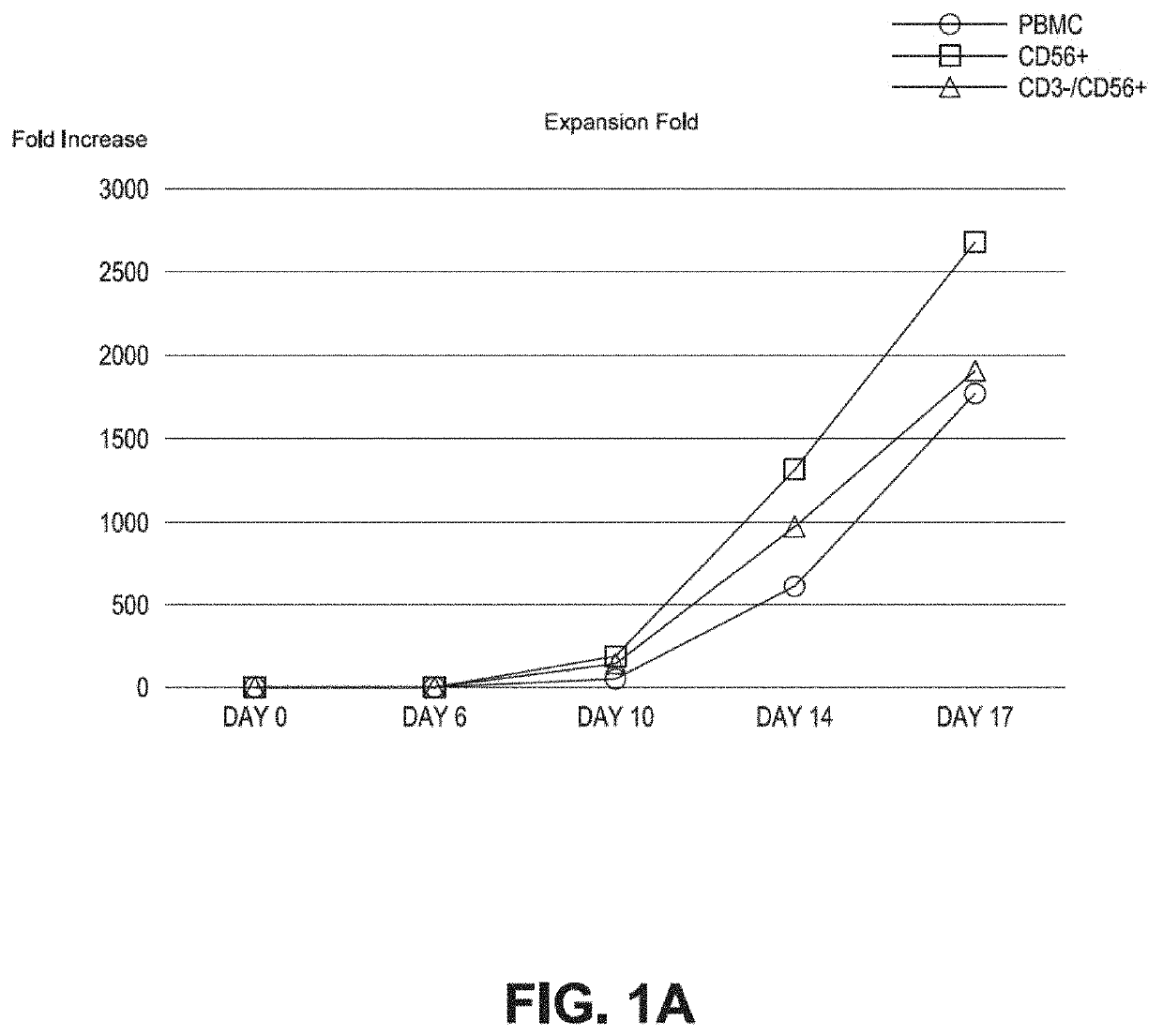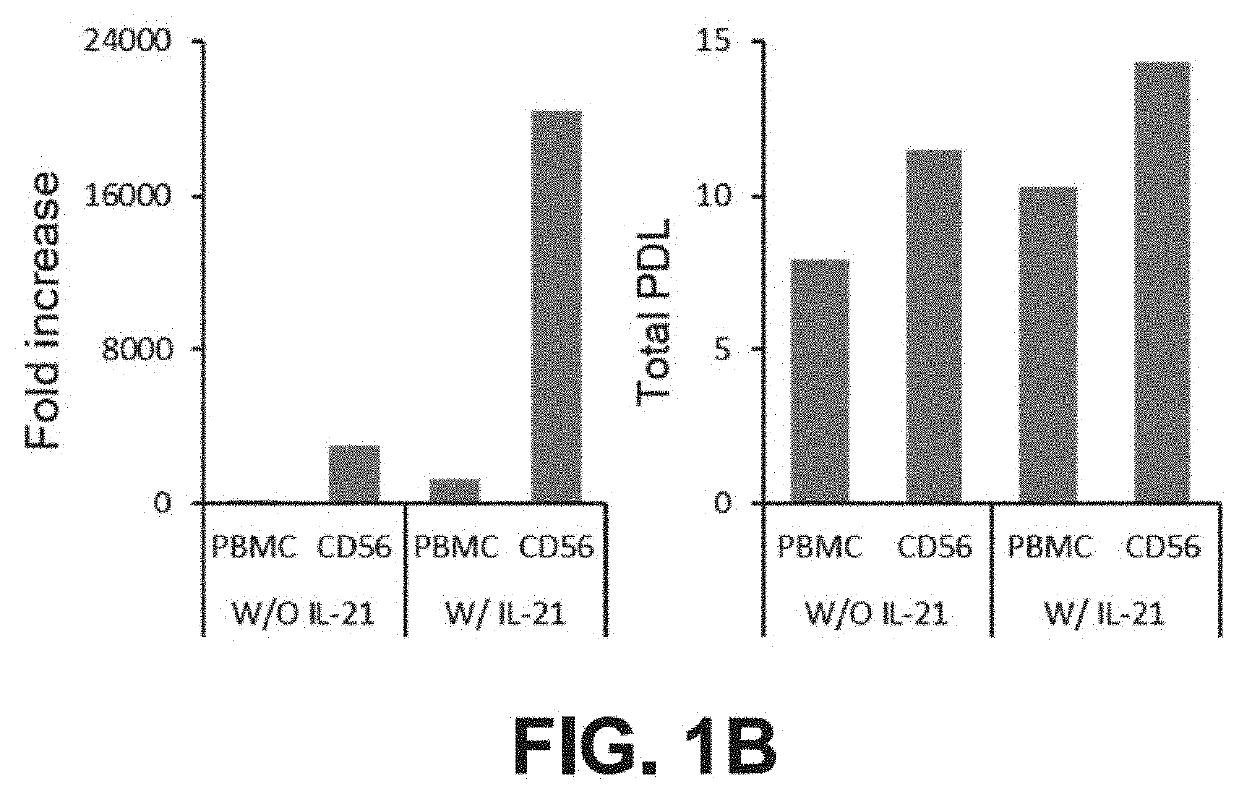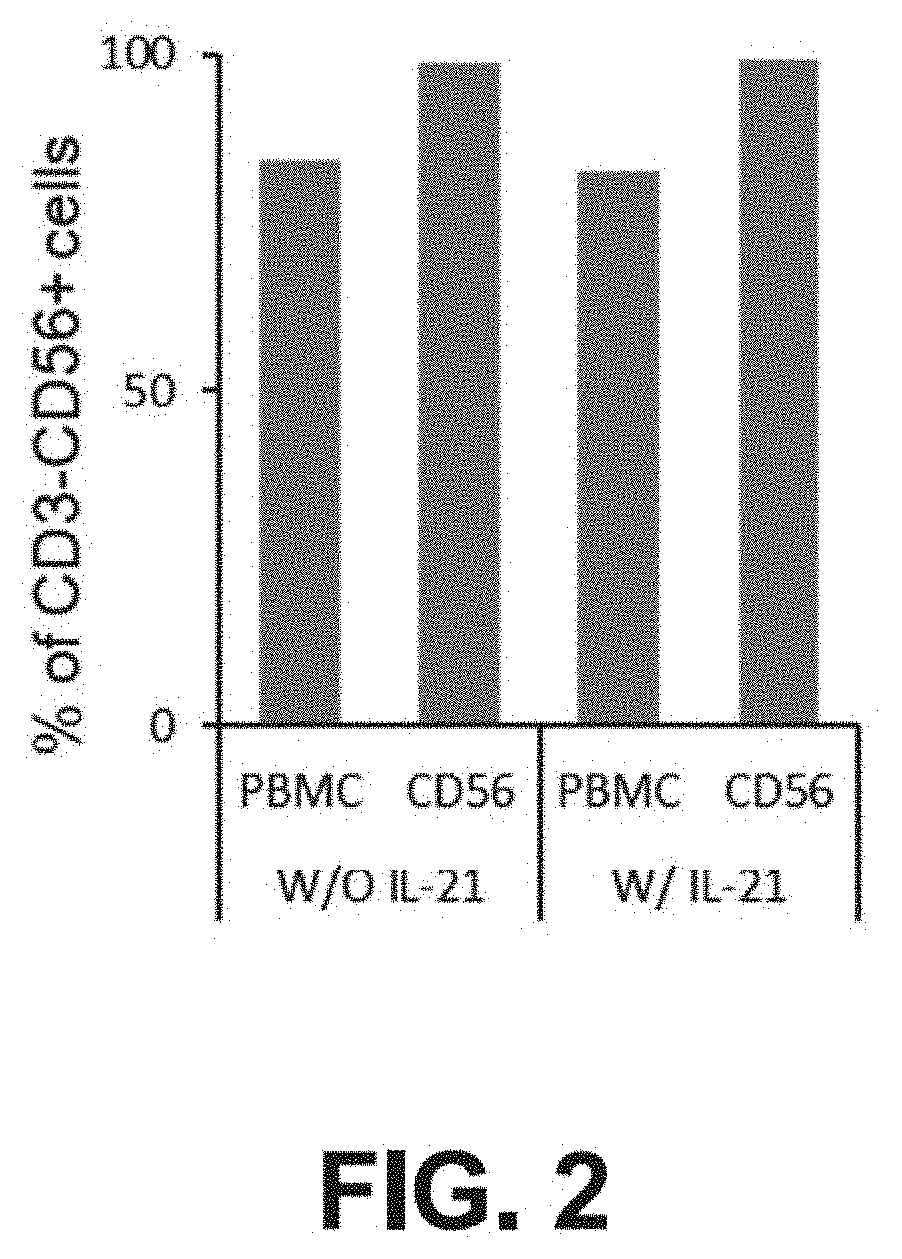Method of producing natural killer cells and composition for treating cancer
a technology of natural killer cells and compositions, applied in the field of manufacturing methods, can solve the problems of difficult to obtain a large amount of blood from cancer patients, difficult to use nk cells as immunotherapeutic agents, and insufficient anti-cancer effect, so as to enhance the effect of prevention and treatment of cancer
- Summary
- Abstract
- Description
- Claims
- Application Information
AI Technical Summary
Benefits of technology
Problems solved by technology
Method used
Image
Examples
example 1
Production of CD56+ Natural Killer (NK) Cells
[0092]CD56+ cells and CD3− / CD56+ cells were isolated from PBMCs by the following method. First, the PBMCs were isolated from the blood using a Ficoll-Hypaque density gradient method and then the cells were counted.
example 1-1
Preparation, for Producing CD56+ Cells
[0093]The counted PBMCs were added with a MACS buffer (1×PBS+0.5% HSA) and suspended, and added with CD56 microbeads (Miltenyi Biotec) to be 1 to 20 μL per 1.0×107 PBMCs, and then incubated at 2 to 8° C. for 5 to 30 minutes. After incubation, the MACS buffer was added and mixed, and then the mixture was centrifuged (600×g) to precipitate the cells. After centrifugation, a supernatant was removed, and the cells were suspended by adding the MACS buffer and added in a column connected to a MACS separator. The MACS buffer passed through the column to remove non-specific binding. The column was separated from the MACS separator and transferred to a 15 mL conical tube, and then added with the MACS buffer to isolate CD56+ cells attached to the column.
example 1-2
Preparation for Producing CD3− / CD56+ Cells
[0094]The counted PBMCs were added with a MACS buffer (1×PBS±0.5% HSA) and suspended, and added with CD3 microbeads (Miltenyi Biotec) to be 1 to 20 μL per 1.0×107 PBMCs, and then incubated at 2 to 8° C. for 5 to 30 minutes. Alter incubation, the MACS buffer was added and mixed, and then the mixture was centrifuged (600×g) to precipitate the cells. After centrifugation, a supernatant was removed, and the cells were suspended by adding the MACS buffer and added in a column connected to a MACS separator. The MACS buffer passed through the column to collect CD3− cells. The collected CD3− cells were added with a MACS buffer (1×PBS+0.5% HSA) and suspended, and added with CD56 microbeads (Miltenyi Biotec) to be 1 to 20 μL per 1.0×107 CD3− cells, and then incubated at 2 to 8° C. for 5 to 30 minutes. After incubation, the MACS buffer was added and mixed, and then the mixture was centrifuged (600×g) to precipitate the cells. After centrifugation, a su...
PUM
| Property | Measurement | Unit |
|---|---|---|
| concentration | aaaaa | aaaaa |
| concentration | aaaaa | aaaaa |
| concentration | aaaaa | aaaaa |
Abstract
Description
Claims
Application Information
 Login to view more
Login to view more - R&D Engineer
- R&D Manager
- IP Professional
- Industry Leading Data Capabilities
- Powerful AI technology
- Patent DNA Extraction
Browse by: Latest US Patents, China's latest patents, Technical Efficacy Thesaurus, Application Domain, Technology Topic.
© 2024 PatSnap. All rights reserved.Legal|Privacy policy|Modern Slavery Act Transparency Statement|Sitemap



